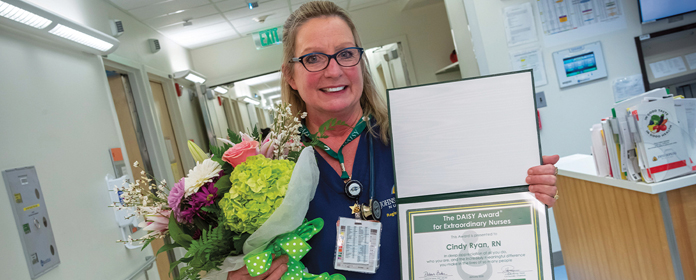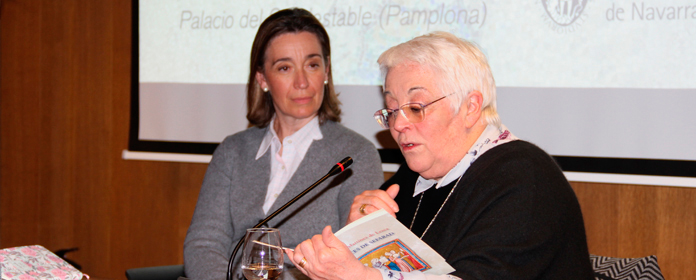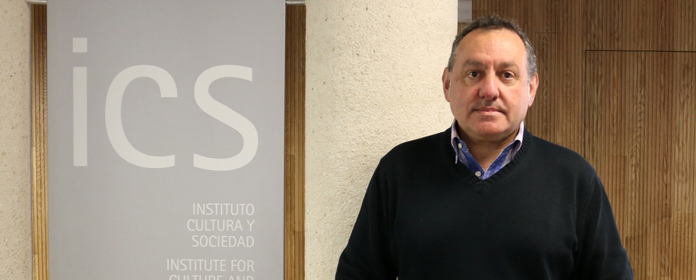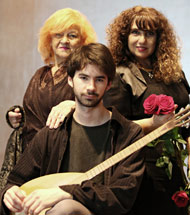"La investigación ayuda a recuperar el pasado de Sefarad y el cine y la literatura contribuyen a hacerlo atractivo para el público"
Anna Dulska, investigadora del Instituto Cultura y Sociedad, añadió en el marco de la III Jornada Sefarad que la música “permite a los sefardíes de hoy a mantener su identidad y memoria y vivirla en el presente”
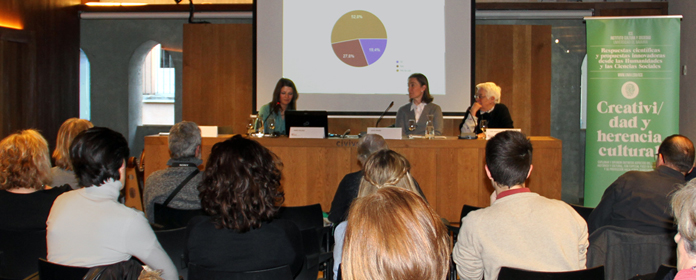
FOTO: Natalia Rouzaut
“La investigación ayuda a recuperar el pasado de Sefarad y la literatura y el cine contribuyen a hacerlo atractivo para el público”. Así se ha expresado Anna Dulska, investigadora del proyecto ‘Creatividad y herencia cultural’ del Instituto Cultura y Sociedad (ICS) de la Universidad de Navarra, con motivo de la III Jornada Sefarad.
Esta edición de la actividad se ha titulado ‘Sefarad imaginada y representada (literatura y cine documental en femenino)’ y ha resaltado la figura femenina en el marco del Día de la Mujer (8 de marzo). Ha contado con la presencia de la escritora Toti Martínez de Lezea, que ha recreado el pasado sefardí en varias de sus obras, y ha acogido el estreno europeo del documental ‘En busca de Sefarad’, de las periodistas argentinas Carina Gurovitz y Paula Castiglioni.
En el marco del evento, Anna Dulska ha ofrecido algunos detalles sobre el proyecto que desarrolla, que tiene como objetivo conocer la memoria del pasado de los sefardíes. Para ello busca personas interesadas en participar en dicho estudio, bien mediante un breve cuestionario, o bien a través de una entrevista. También analiza una de las tradiciones centenarias que han llegado hasta la actualidad: que los judíos expulsados se llevaron las llaves de sus antiguas casas con la esperanza de poder volver algún día.
Con respecto a otras líneas de investigación que se están llevando a cabo hoy en día sobre Sefarad, ha mentado en primer lugar los estudios en torno a textos judíos, custodiados en diversos archivos. De igual modo, ha mencionado los trabajos arqueológicos que se están realizando en diversos puntos geográficos para recuperar la “cultura material”. Ha puesto como ejemplo las excavaciones de la judería de Estella, “que han servido para ponerla en valor tanto para la población local como para el turismo”.
Dar vida a los hallazgos arqueológicosDe acuerdo con Anna Dulska, estos hallazgos arqueológicos “cobran vida con las historias narradas en literatura y cine”, como es el caso de un cuento sobre una joven judía de la Estella medieval que Toti Martínez de Lezea XV ha incluido en el libro Voces de Sefarad, presentado durante la jornada.
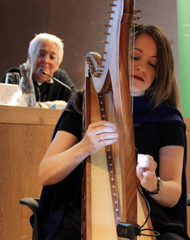 “Es difícil escribir sobre la Edad Media en España de forma literaria sin hablar de la presencia de los judíos”, ha puntualizado la investigadora del ICS. “Retratar su vida cotidiana, además, ayuda a derribar los estereotipos relacionados con sus actividades económicas. Lo cierto es que tenían una cultura muy rica”.
“Es difícil escribir sobre la Edad Media en España de forma literaria sin hablar de la presencia de los judíos”, ha puntualizado la investigadora del ICS. “Retratar su vida cotidiana, además, ayuda a derribar los estereotipos relacionados con sus actividades económicas. Lo cierto es que tenían una cultura muy rica”.
Con respecto al cine documental, ha remarcado que “contribuye a recuperar historias actuales, dando voz a sefardíes de hoy, que recuerdan un mundo que ya no existe: una foto fija de la Península ibérica del siglo XV”. En esa línea ha valorado el trabajo de las periodistas de América TV Carina Gurovitz y Paula Castiglioni, que en su documental ‘En busca de Sefarad’ han retratado la vida de la comunidad Sefardí en Buenos Aires, la mayor del mundo hispano, y sus esfuerzos por mantener viva su cultura y sus tradiciones.
Por último, Anna Dulska avanzó que la música estará presente en posteriores ediciones de la Jornada Sefarad por su importancia para los sefardíes: “Les ayuda a mantener su identidad y memoria del pasado y vivirlo en el presente”. Cabe recordar que la jornada de 2019 ha contado con la actuación sorpresa de la artista navarra Maite Itoiz, que ha interpretado dos canciones en idioma ladino.

